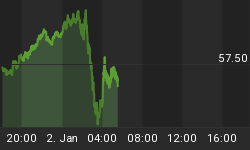Our good friend Michael Pollaro just sent a chart from the St. Louis Fed that shows the US drifting back into yet another banking crisis.

The green line tracks fluctuations in the US yield curve, defined as the difference in yield between 10-year and 2-year Treasuries. When the yield curve is steeply positive, banks are able to borrow short at low rates and lend long at higher rates, earning a nice return and in the process driving economic growth. When the yield curve flattens the opposite occurs, with banks unable to make money and becoming reluctant to lend. So a flattening yield curve implies a slowing economy. Note the similarity between the past few years' spread contraction and the one that began in 2004 and culminated in the Great Recession.
Now check out the red and blue lines representing different measures of credit quality. The lower they are, the fewer loans are in various categories of "non-performance," and vice versa. What's happening now is similar to the spike in bad loans that started in 2005.
The implication: Despite the headline numbers (like Friday's largely-fictitious jobs report) that imply a stable, modest expansion, under the surface the financial system -- composed of business loans, bank profits, etc. -- is deteriorating fast.
And since interest rates have fallen rather than risen post-Brexit, causing yield curves around the world to flatten further, it's safe to say that these trends are accelerating.
That would explain why so many iconic money managers and speculators have turned publicly bearish recently. The latest is Jeremy Grantham of Boston-based hedge fund GMO. Here's an excerpt from a MarketWatch article on his firm's current stance:
Investment firm that called the 2008-09 crash doesn't like most stocks or bonds
You need a portfolio of at least $5 million to get in the door as a client at Boston-based money management firm GMO.
And with some reason. The firm is famous for predicting the last two financial crashes ahead of time, and firm chairman Jeremy Grantham is a legendary figure on Wall Street. His quarterly letters are required reading by anyone managing other people's money.
GMO is usually seen as too bearish, but in an industry that is generally far too bullish that's no bad thing. And often forgotten is that the firm has made some terrific contrarian buy recommendations too -- such as emerging markets and value stocks at the start of the last decade, and of stocks generally in the wake of the 2008-09 crash.
But for those of us who don't have $5 million or $10 million knocking around, what's GMO's best advice at the moment? To find out, I spoke to Matt Kadnar, a member of the firm's asset allocation committee. Here's what he said about how GMO perceives the current global investing environment:
1. The overall investment outlook is really, really dismal. "There is no asset out there that is cheap," Kadnar says. None.
2. The outlook for U.S. stocks is terrible. GMO's central forecast -- which is a directional estimate more than a precise prediction -- warns that U.S. large- and small-cap stock indices are now both so overpriced compared to history that they will probably lose value, compared to inflation, over the next seven or so years.
3. In the wake of the emerging markets slump and now Brexit, investors are becoming almost as dangerously fixated on U.S. stocks as they were (disastrously) in 2000, according to GMO. Kadnar says that once again, clients are starting to ask why anyone needs to own anything other than the S&P 500.
4. Investors also are likely to end up losing -- after inflation -- over the next seven years or so on U.S. bonds, cash, and small-cap international stocks, GMO's current central forecast predicts. The firm also sees minuscule post-inflation, or "real" returns, on both international large-cap stocks and emerging-market bonds.
















